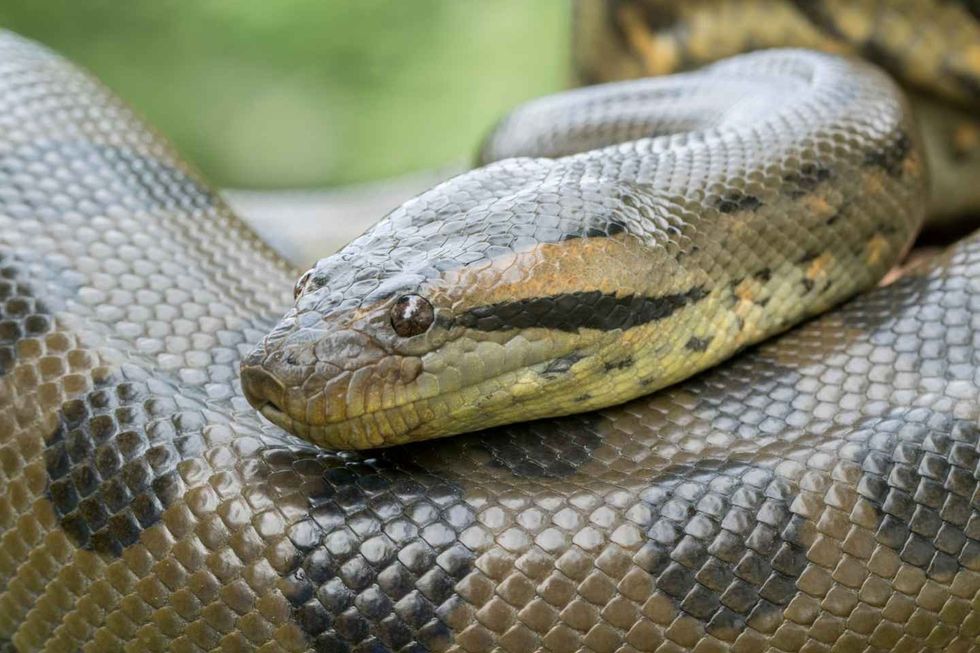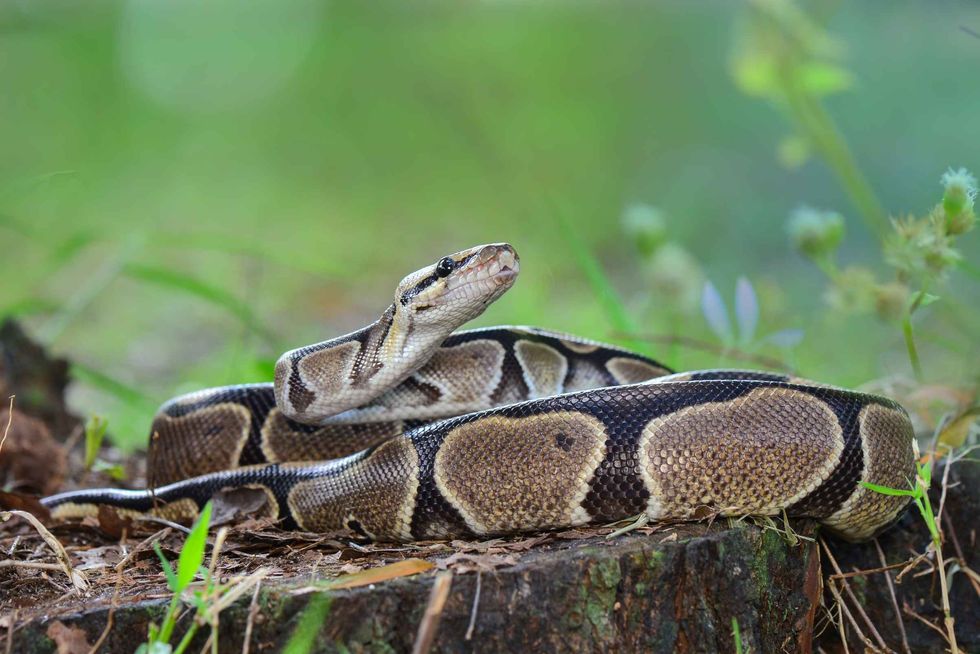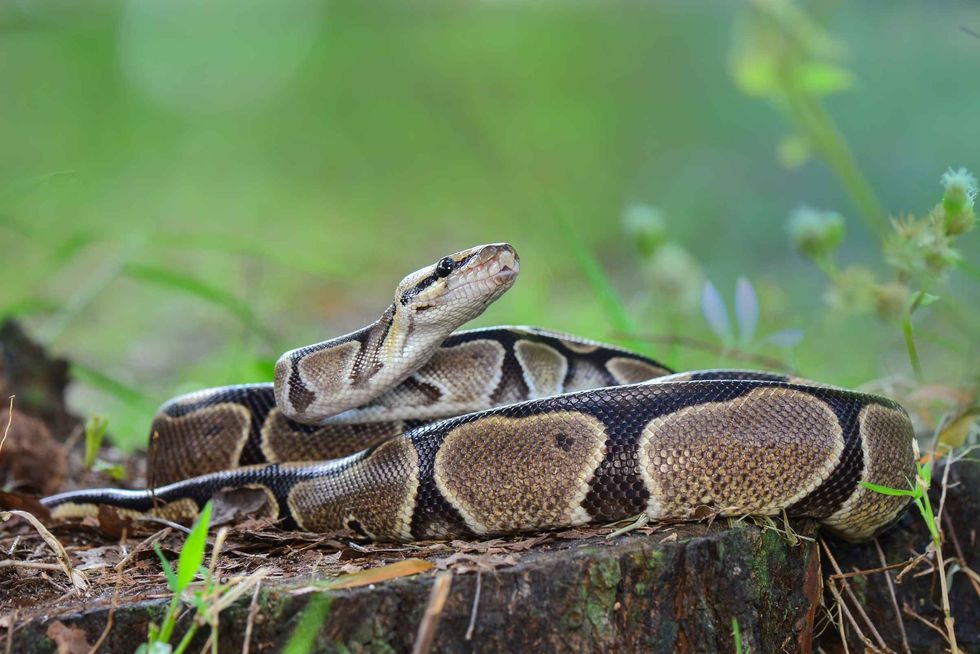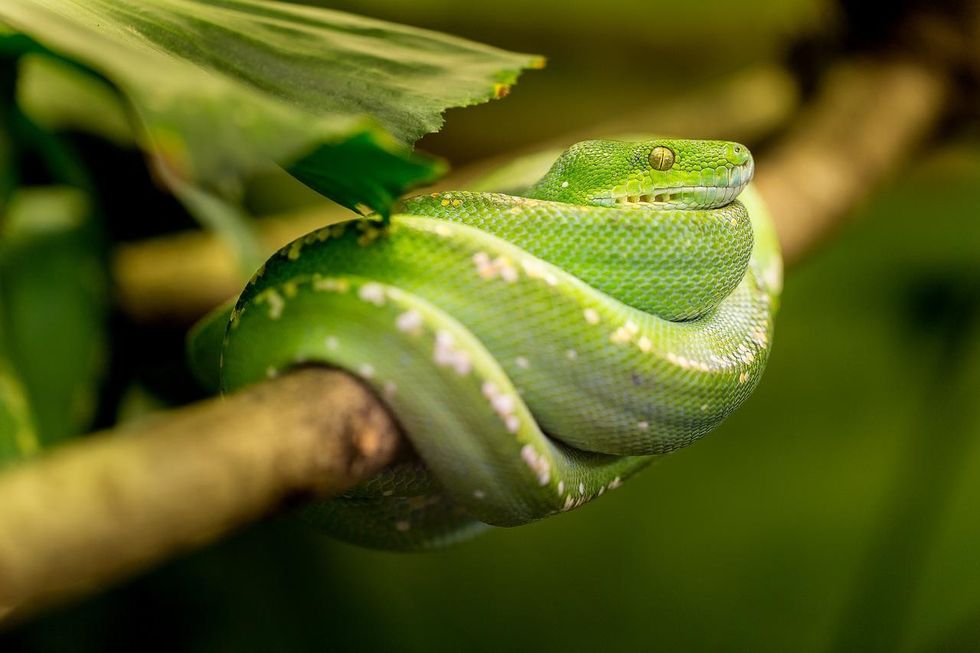Best Pet Snakes: Fang-tastic Facts Guide On Pet Snakes For Beginners!
Do you want to own a pet snake, but are confused by all the choices?
We have prepared a list of the best beginner snakes, which you and your family are sure to love. If you are fascinated by these slithering creatures and wish to learn more, this list is for you.
Though known for being slimy, cold blooded predators, snakes can be very good pets in the hands of a patient animal lover. These creatures are quite friendly, affectionate and great to bond with, making them a great choice of pet for people who wish to own a pet on the lower end of the energy spectrum.
However, there are a number of things you need to know before committing to owning a snake, as they have special needs and wants in order to keep them happy and healthy.
If you enjoyed this, do check out rattlesnake facts and best pet lizards from Kidadl.
Why snakes may be the best pet for you?
If you love reptiles, or are not ready to deal with the high energy and maintenance levels of a pet like a dog, keeping a pet snake may be for you.
Asides from being quite easy to take care of once you know what you are doing, these unusual pets make great conversation starters, and fun pets for daring individuals as well as families alike.
Despite other claims, snakes can indeed be tamed and can learn to bond with and love their owners, making them great companions. They do not require much space, only needing a large enclosure with the necessary add ons, and are not really a hassle to feed as most snakes feed once or twice a week, sometimes even less.
They also have pretty long life spans, ranging from 10-30 years, making them the ideal choice for families who want long-term companions.
What are the safest snake to own?
The safest pet snakes to own are those which are docile, friendly and non-venomous in nature. Out of all pet snake species, the corn snake has been voted to be the safest one as well as the best beginner snake to own, due to its calm, shy nature and adaptability.
It is also quite easy to house for snake owners and not very high maintenance, making it a great pet for families and snake lovers. Venomous snakes and larger ones are not recommended when looking for a beginner snake.

What are the best pet snakes for kids?
Though there are many snakes which can be kept as pets, here are some snakes for beginners which make great pets.
African house snake: these small brown snakes are a good fit for most beginners. They rarely grow over 3 ft (0.9 m) long, which makes them easy to keep in tanks at home.
They also have a pretty good lifespan, living for around 20 years! The only downside to trying to keep them as pets as, despite their good reputation, they are not one of the more popular pet snake choices, making them difficult to find.
Woma python: this Australian python is rising in the pet snake popularity ranks due to its small size, calm nature and manageable care needs. They are very interesting to look at, with their yellow and tan bodies covered with brown stripes.
This gives them a tiger-like appearance, making them quite cool! They prefer warm, arid surroundings meaning their tank must be equipped with a basking area, sandy substrate and humidifier. They are however very enthusiastic eaters and prone to obesity, so it is important not to overfeed them.
Baird's rat snake: this endemic South American desert snake has striking yellow and orange coloring on its belly, making it an attractive pet. They usually do not grow over 5 ft (1.5 m), making them good pets for people with space restraints.
Allow adequate material for bedding and burrowing such as paper towels, substrate, wood shavings, as these snakes are keen explorers.
Though they are keen eaters, they may decrease their intake during winter, which is nothing to worry about. They need warm temperatures and a proper basking area to promote good health and digestion.
Brazilian rainbow boa: this beautiful orange and black snake can be easily found in captivity, and is a great choice for beginners as it is quite manageable. Keeping this snake in a high humidity environment is essential, and having UV lights overhead can help to bring out the intensity of their coloring.
Try to decorate their cages with small pants, coconut coir and husks in order to keep the humidity level in their tanks high and provide them with a comfortable environment.
Western hognose snake: though these snakes may seem dramatic and stick up with their upturned noses and picky behavior, they are in fact quite adorable.
The hognose snake gets its name from its flat, upturned nose which has a pig-like appearance to it, and their bodies are quite chubby.
Their short, stout bodies also make them less likely to be escape artists, making them a good pick for beginners who are still getting used to handling them. Western hognose snakes love burrowing, and should be provided with a thick layer of sandy substrate or similar material in their enclosures.
One drawback of these pet snakes however is their picky nature when it comes to food, and it is difficult to get them accustomed to eating standard feeder mice.
Milk snake: though these small bright snakes have the typical appearance of a venomous snake, they are actually quite harmless.
Milk snakes are long and slender with muscular bodies, and rarely grow over 6 ft (1.8 m) long, however this is not true for all subspecies of the milk snake so be sure to do your research before adopting one of them.
They live for between 10-20 years, and it is essential to house them individually as they can adopt cannibalistic tendencies.
Milk snakes are also fond of climbing, and providing their enclosure with branches and climbing equipment will keep them happy and healthy.
Green snakes: the two varieties of green snake (rough green snake and smooth green snake) are good choices due to their small size as well as insect based diet, meaning that they are easy to house and feed.
Kenyan sand boa: the small Kenyan sand boa is a great choice for beginners who are intimidated by larger snake species. They have a round head and chubby body with big beady eyes, making them really cute.
They are pretty low maintenance as they only need to be fed once every two weeks.
Sand boas love burying themselves in sandy substrate, so be sure to provide at least a few inches of sand in their tanks. An interesting fact about Kenyan sand boas is that they do not lay eggs, instead giving live birth to baby snakes.
Children's python: the children's python is one of the best snake species for people looking to adopt a python. They are quite small, only measuring between 2-4 ft (0.6-1.2 m), and are very active.
They are great climbers and love hanging off of branches - even known to hunt small bats mid flight in the wild!
They are nocturnal animals, so it would be beneficial to put small artificial plants and rocks in their enclosures for them to hide amongst.
Children's pythons also prefer darkness due to this, so their source of heat must not be a light as it will make them hide. Another python species, the Carpet python also makes a great beginner pet due to having similar characteristics.
Rosy boas: these small white snakes, native to North America, usually have three stripes running along their bodies which come in a variety of orange, gray or brown.
Rosy boas are quite docile and slow moving, making them a popular pet for beginners.
If taken good care of, they can live for up to 30 years in captivity, which is a pretty long lifespan for a snake! Rosy boas do however, have a very big appetite and are prone to obesity (being mice and egg eating snakes) so it is important not to overfeed them.
As they are small, they do not need much space as they require low humidity and warm conditions, similar to those of their native desert habitat.
Garter snake: garter snakes are the most common species of snake in the world, with a huge number of subspecies. They are active during the day so their owners can spend quite a bit of time with them, and their small size makes them great pets for anyone.
Garter snake pets are very curious and watchful as they have great eyesight, and can live for up to 10 years.
As Garter snakes are diurnal, installing a UV light in their enclosures is necessary for them to bask in.
Garter snake individuals can be kept together, however they must be separated during feeding as they can tend to be cannibalistic at times. They also take a bit longer to get used to handling than other snakes do, as they can be defensive in nature and take time to warm up to their owners.
California kingsnake: this tough species of kingsnake is native to The United States and Mexico, and can be recognized by its beautiful banded white and brown skin.
Though California Kingsnakes may seem like an easy choice of pet due to their small size, they are known to be quite good escape artists, so they need to kept an eye on.
Their enclosures need to be split into two parts, warm and cool, as these snakes prefer both. The terrarium needs to be equipped with escape proof lids, and they must be housed alone to prevent incidents of cannibalism.
They can initially be quite antsy, but with time and patience they will warm up and be more open to being handled by their owners.
Gopher snake: the gopher snake is a common North American snake, which is the largest variation of the bull snake, and is very adaptable. Gopher snakes are one of the most popular species of beginner snake to adopt.
This is due to the fun-loving nature and active lifestyle of a Gopher snake. This gopher snake rarely grows more than 6 ft (1.8 m), making them easy to accommodate for snake lovers.
Gopher snakes can live for up to 30 years and are easy to acquire as they are widely available. Gopher snake is a great option if you're a beginner.
Ball python: the ball python (Python regius) is one of the most docile species of python, and are actually very shy! They need a lot of hiding spaces in their enclosures as they love to stay out of the spotlight, and take time to warm up to being handled.
They are nocturnal and hence need artificial lighting in their tanks to bask in, as well as heat lamps.
A fun fact about these beautiful pythons is that they are constantly morphing, and come in a variety of colors and patterns, which can be acquired by cross breeding. They can also live for up to 30 years, which is a very long lifespan for snakes.
Corn snake: unanimously voted as the best beginner snakes, the corn snake is known for being gentle, friendly and very affordable (as well being non venomous snakes), and the best choice out of all the snakes on this list. They are also very attractive, with their beautiful red coloring and adorable round eyes.
Corn snakes are very flexible when it comes to food, and are friends to gardeners and farmers as they provide affordable pest control by getting rid of insects and mice.
These shy snakes love to bury in the sandy substrate, and need a heat lamp to bask under.
Corn snakes tend to grow up to 6 ft (1.8 m) in length, and live up to 15-20 years. The Corn snake is also known as the 'rat snake'.
Can snakes recognize their owners?
Despite their reputation as cold-blooded killers, pet snakes can actually warm up to and bond well with their owners over time.
Snakes have a pretty good sense of smell and taste, and as you spend more time with your pet, it will learn to associate your scent with that of warmth, love and safety.
They can also use this sense of smell to smell chemicals that humans give off when they are scared, however, they have no way of knowing which chemical depicts which emotion - so though they can technically smell fear, they cannot interpret it.
Though their eyesight is not that great, they can still recognize their owners with their limited sight and perceive them as 'safe' and not a threat.
Are snakes a high-maintenance pet?
Snakes are overall not a very high maintenance pet, it does take some time for both the snake and snake owner to get used to one another.
Some snakes can be reclusive and shy, and may lash out when touched or handled.
The frequency at which you can handle your snake depends on the individual, if it is a shy, skittish snake it shouldn't be handled regularly, as it can cause it to develop stress.
Tamed snakes can be handled as long as they are comfortable, with the exceptions being after they've eaten or while they are shedding, as it can cause them pain or injury.
Do, however, always buy a snake from a reputable breeder, as wild caught snakes are more prone to being stressed out and are susceptible to carrying bacteria and disease.
To make your snake comfortable and bond with it, first make it used to your smell by holding your hand in front of its nose. After doing this for a period of time, you can start gently touching your snake while it is in the tank until it becomes comfortable enough with it.
Slowly progressing the amount of handling is a good way to bond with your snake, and get it to trust you.
Here at Kidadl, we have carefully created lots of interesting family-friendly facts for everyone to enjoy! If you liked our suggestions for Best Pet Snakes: Fang-tastic Facts Guide On Pet Snakes For Beginners! then why not take a look at Are Lobsters Bugs?
What's The Deal With Lobsters And Cockroaches? or Are Iguanas Good Pets? Facts To Know Before Being Pet Iguanas Owner?
We Want Your Photos!
More for You
Bachelor of Arts specializing in Economics

Tanya ParkhiBachelor of Arts specializing in Economics
Tanya is a skilled content creator with a passion for writing and a love for exploring new cultures. With a degree in Economics from Fergusson College, Pune, India, Tanya worked on her writing skills by contributing to various editorials and publications. She has experience writing blogs, articles, and essays, covering a range of topics. Tanya's writing reflects her interest in travel and exploring local traditions. Her articles showcase her ability to engage readers and keep them interested.
Disclaimer
1) Kidadl is independent and to make our service free to you the reader we are supported by advertising. We hope you love our recommendations for products and services! What we suggest is selected independently by the Kidadl team. If you purchase using the Buy Now button we may earn a small commission. This does not influence our choices. Prices are correct and items are available at the time the article was published but we cannot guarantee that on the time of reading. Please note that Kidadl is a participant in the Amazon Services LLC Associates Program, an affiliate advertising program designed to provide a means for sites to earn advertising fees by advertising and linking to Amazon. We also link to other websites, but are not responsible for their content.
2) At Kidadl, we strive to recommend the very best activities and events. We will always aim to give you accurate information at the date of publication - however, information does change, so it’s important you do your own research, double-check and make the decision that is right for your family. We recognise that not all activities and ideas are appropriate for all children and families or in all circumstances. Our recommended activities are based on age but these are a guide. We recommend that these ideas are used as inspiration, that ideas are undertaken with appropriate adult supervision, and that each adult uses their own discretion and knowledge of their children to consider the safety and suitability. Kidadl cannot accept liability for the execution of these ideas, and parental supervision is advised at all times, as safety is paramount. Anyone using the information provided by Kidadl does so at their own risk and we can not accept liability if things go wrong.
3) Because we are an educational resource, we have quotes and facts about a range of historical and modern figures. We do not endorse the actions of or rhetoric of all the people included in these collections, but we think they are important for growing minds to learn about under the guidance of parents or guardians.







